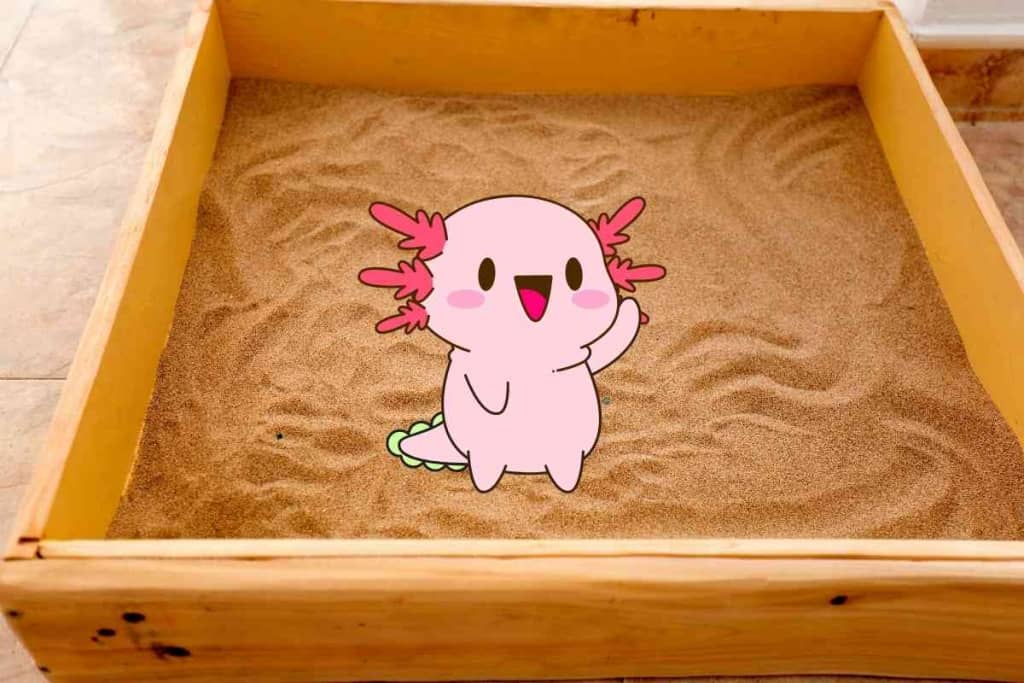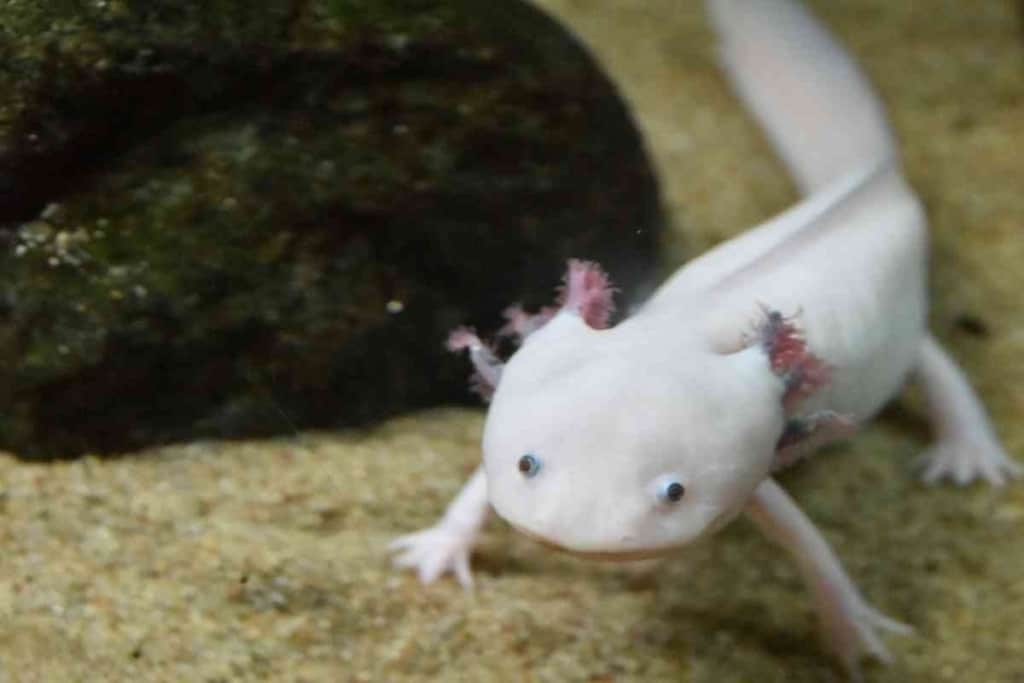Is Play Sand Safe for Axolotls? Cash-Saving Substrate Material
Axolotls are a unique and one-of-a-kind experience for pet owners. They’re different from other salamander types because they don’t metamorphose fully, remaining in their infant stage for their entire lives. They have sensitive, delicate skin that requires care and thought when choosing the substrate for their tanks. Their method of eating also makes the decision challenging because they may ingest things that are dangerous for them. You’ll want to choose a substrate that’s safe for their skin and won’t harm them if they eat it while consuming their meals. Is play sand safe for axolotls? This may be a question that you’re wondering! If so, we have that answer and some more helpful information for setting up your new axolotl tank.

Is play sand safe for axolotls?
Sand that’s made for children to play with like in sandboxes are perfectly safe to use in your axolotl aquarium if you thoroughly rinse it first. Play sand is washed and rinsed to remove any debris or bacteria that may harm children. After this, the sand is pressure washed to smooth down sharp edges.
The treatment that makes it safe for children also makes it safe for axolotls! But you should always rinse the play sand before placing it in your axolotls’ tank.
What Types of Play Sand are Safe for Axolotls?
All of them! Make sure that the sand you’re purchasing is genuine play sand that’s been treated for use by children. Many brands will indicate this on their bags. You should also avoid using sand with dyes, which could cloud your water.
Play sand is the ideal and possibly the best substrate for axolotls. Because play sand is pressure treated until it’s very fine, the material will safely pass through even the smallest individuals.
Take care not to accidentally purchase course aquarium sand, also known as builder’s sand, for the bottom of the tank. Course sand doesn’t undergo the same treatment as play sand and is not safe for an axolotl to have in their home.
What Other Kinds of Sand are Safe for Axolotls?
Play sand is an excellent substrate for your axolotl, but clean fine natural sand is also fantastic.
Both products are fine enough that they won’t cause your axolotl any harm if they happen to ingest some while eating it. They’re also free of rough edges that might damage your axolotl’s delicate skin.
When you use sand in your tank, occasionally stir it so that bacteria don’t develop in air pockets. You should maintain the cleanliness of the tank in other ways as well.
What Other Kinds of Substrate or Safe for Axolotls?

We’ve covered play sand and natural sand, which are the ideal substrate for an axolotl’s environment. But what else could you use?
Large Rocks
If you don’t want to keep sand in your tank, you can use large rocks or stones to cover the bottom.
The rule of thumb is that you should only use rocks at least three times larger than your axolotl’s mouth. Choosing this size stops them from accidentally ingesting them when they suck up pieces of food.
You’ll also want to ensure that the rocks and pebbles are smooth because axolotls are amphibians, not a reptile, they have delicate skin that could easily be cut by sharper surfaces.
Tile
Tiles make for a useful bottom because they can be beautiful and functional. They won’t cause any damage to your axolotl’s skin, and they won’t be ingested by mistake. The only caveat is that you’ll need to ensure they’re safe for aquariums and won’t leak any toxins into the water.
Mix
Mixing the appropriate natural or play sand with large rocks will make for an acceptable substrate for your axolotl. Play sand and fine natural sand paired with large stones can be used to create a more organic environment.
Bare-bottom
The bare bottom tank approach to an axolotl’s tank is the safe but plainest option around. Leaving your axolotl in a tank without any substrate will keep them safe, though it’s hardly going to be enjoyable to look at.
What Kinds of Substrate are Bad for Axolotls?
Now that we’ve covered what kinds of substrates are suitable for axolotls, let’s cover what’s not good for them.
Rocks and Gravel
You’ll want to be careful with rocks and only choose ones that are large enough that your pet can’t suck them up while they’re eating. Gravel is a no-go all the time because the pieces are almost always large enough for an axolotl to eat.
Additionally, rocks and gravel can have sharp edges that can tear or cut an axolotl’s skin.
Crushed Rock and/or Shells
These aren’t appropriate for your axolotl’s tank because they have sharp, rough edges that can harm your pet’s skin. They’re also small enough to be ingested and injure your axolotl’s digestive tract.
Coarse Sand
This one can be confusing. When you buy play sand or natural sand, you want to be careful about your purchase. Coarse is sand is entirely different and is sometimes called “builder’s sand.”
Coarse sand is the kind of material used in construction. It has not been treated for chemicals or debris, and it has not been water pressure treated to remove sharp edges. Instead, it can be dangerous and potentially lethal to your axolotl if consumed.
Fake Grass or Mat
Some hobbyists want to create a beautiful, natural-appearing tank for their axolotl. To achieve that end, they’ll purchase fake grass or a fake grass mat to add some low-maintenance greenery to their tank.
The trouble with these is that they are not always suitable for an aquatic tank. The extra contact with water can break down the material and cause it to leak toxins into the water. An axolotl has susceptible skin, and exposure to these kinds of chemicals can be harmful.
Instead, try out some of these axolotl-safe plants for your tank!
Putting It All Together
Is play sand safe for axolotls? It is! If you’re purchasing the appropriately treated sand, play sand is a lovely substrate for your axolotl tank. Remember the following tips:
- Check the bag to ensure you’re purchasing play sand, not coarse or builder’s sand.
- Rinse your play sand thoroughly before adding it to the tank.
- Check sand for debris.
- Do not purchase any play sand that has been dyed or colored.
